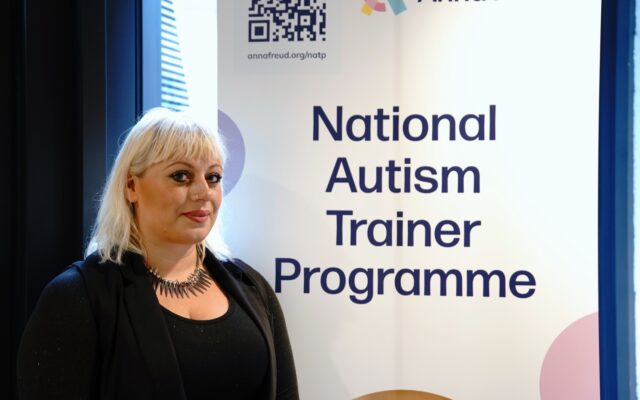What helps women leave secure wards?
Lessons from research about what supports women with learning disabilities moving on through and from the locked ward system are considered by Rebecca Fish and Hannah Morgan at the Centre for Disability Research at Lancaster University
Background
The purpose of secure services, also known as forensic inpatient services, is to provide assessment, treatment and care, with rehabilitation viewed as a key outcome. Research shows that people in secure units tend to stay there for a long time. This is because the process of relocation can be lengthy and complex, involving multidisciplinary risk assessments and collaboration between services.
Despite the ambitions of Transforming Care, NHS England reported in March 2019 that more than 2,200 people with learning disabilities remain in inpatient units. This study, which was undertaken in 2012, found that staff and service users felt it was important for women to move through and from inpatient settings and helped identify good practice principles for leaving secure units. This offers valuable insight for services in the wake of Transforming Care.
Findings
There were good examples of how women had been able to move on from which we can learn. For instance, when relationships with staff were positive, this was generally helpful for moving on as women trusted staff to make changes slowly. A good example concerned Jane (not her real name), who was under 24-hour observation when she first came to the unit. Working together to reduce the need for observations, staff built a good relationship with her, offering constant one-to-one support whenever Jane asked for it. One staff member said:
“Jane speaks to someone in the morning, and at night-time about how she’s feeling, whether she’s settled, does she think she’s well enough to be [unsupervised] or not? So she’s in control and it’s really helped.”
Another woman, Elaine, said she had made friends in the unit and this had helped her to move on. Previously, she had been in a flat on her own:
“Well I am moving on now because I’m living with someone now, living with Teresa, and I’m getting on all right with her all the time.”
Many staff said that establishing trusting relationships was important, especially when a woman might self-harm. Some said that incidents of self-harm and anger were not always setbacks but could be worked around by adjusting their responses. They relied on having knowledge about the woman’s past to inform care:
“Nicola achieved a hell of a lot in her time down there – she did really well. She had a few incidents. I think you should set the goals, and you might have an incident, but you’ve got to learn from that incident – and think you might have to do it differently the next time, and do it another way round. That’s what they did and she achieved a lot really.”
Barriers to moving on
In contrast, some staff said that having good relationships on the ward held some women back, as they did not want to leave. Other staff said that self-harm and showing anger also held women back from moving out of the ward. Incidents such as these were found to be included in daily reports while positive things were sometimes left out. Many of the women we spoke to knew what they needed to do to move on but had not considered their own aspirations, for example, as one woman said:
“Do whatever they say, don’t refuse to take our medications, do whatever we have to do, behave, don’t go against our treatment and care plans by refusing medication or refusing to eat. Don’t refuse work because that can delay you going – even if you refuse your work, that can delay you.”
Some women said they had to put up with aggressive behaviour from other service users to show that they were ready to move on, as this woman said:
“I got hit last week off [name]. And I just sat there and let her do it, I didn’t want to hit back and that’s why the staff said: ‘That’s good that you didn’t hit back.’ So that’s why they’re going to move me on.”
Others mentioned having to ‘prove’ they were ready by demonstrating progress:
Tanya: “[You move on] when you don’t do anything wrong. You have to be happy.”
Researcher: “What’s ‘wrong’? Not shouting?”
Tanya: “Not being quiet either.”
Researcher: “You’re not allowed to be quiet?”
Tanya: “You’re not allowed to be quiet because they’ll think you’re ‘on one’ [sulking or brooding].”
Conclusion
The study shows that women with learning disabilities can move on from secure wards with the right level of support. However, many of the decisions about how women move on had been made by staff and women felt they had to prove they were ‘ready’ in some way. We argue this is problematic because it encourages passivity and a lack of agency, including putting up with aggressive behaviour from other service users. We conclude that women should be asked what they want to achieve, and this should be central to any decision about moving on. The views expressed here are not necessarily those of the Economic and Social Research Council, which funded the research
Hannah Morgan is a senior lecturer and Rebecca Fish is a researcher at the Centre for Disability Research at Lancaster University
‘Moving on’ through the locked ward system for women with intellectual disabilities
Aims: To find out the experiences of women and staff on three wards of a secure unit for people with learning disabilities.
Methods The researcher spent 120 hours on three locked wards and interviewed 16 women with learning disabilities and 10 staff on these wards. Field notes and transcripts were then analysed to find references to moving on and we used these to consider how women with learning disabilities can move on from secure care
Read the report Fish R, Morgan H (2019) ‘Moving on’ through the locked ward system for women with intellectual disabilities. Journal of Applied Research in Intellectual Disabilities. Published 5 April. https://onlinelibrary.wiley.com/doi/full/10.1111/jar.12586.
Accessible summary: How do Women with Learning Disabilities ‘Move On’ Through Secure Units? http://wp.lancs.ac.uk/cedr/2019/04/26/moving-on/






